How well do your students understand fractions?
Are they one-quarter, one-half, or three-quarters of the way there?
Bridge the gap with these methods and activities for teaching fractions.
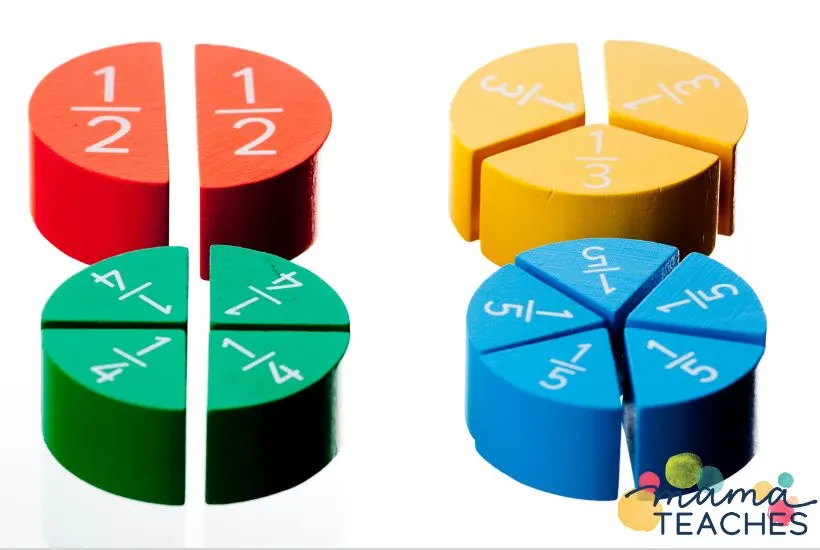
This article contains affiliate links to things that you might like.
Explaining What Fractions Are to Students
Fractions are intimidating to students.
They look different from all other numbers because they are small and stacked on top of each other.
Do you need to know how to teach fractions?
You must explain what they are in a way that students understand.
If You Have Taught Decimals and Percents
If you have already taught decimals or percents, you can build off that teaching when introducing fractions.
Picture three ways to carry drinking water: a mug, a water bottle, and a transparent glass.
All three containers do the same thing.
They just look different.
Percents, decimals, and fractions are the same way.
They are all ways to show part of a whole.
You can express a part of a whole as a decimal (0.5), a percent (50%), or a fraction (5/10 or 1/2).
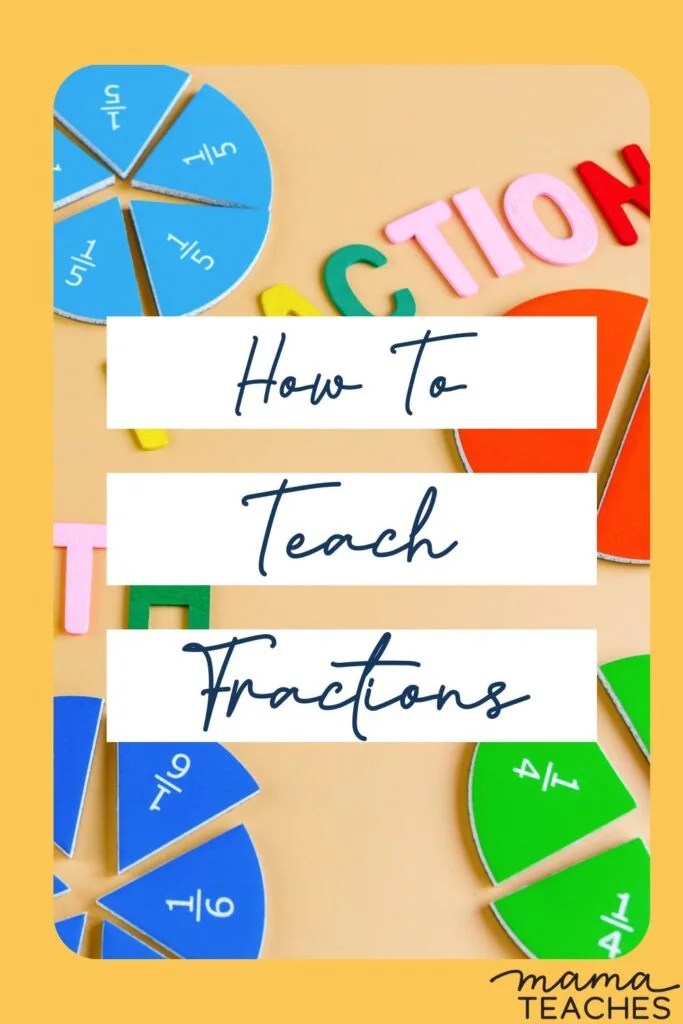
If Your Students Are New to Parts of a Whole
If your students have not yet encountered decimals or percents, you will need to go about explaining fractions in a different way.
I like to do this with a story about imaginary cookie cakes.
Let’s say that as a special surprise, you and your siblings each get a cookie cake all to yourself.
You eat your entire cookie cake right away (and probably get a stomach ache!).
You have eaten 1 whole cookie cake.
Your older brother eats his entire cookie cake as well (and then he gets a stomach ache).
He ate 1 whole cookie cake.
Your younger sister watches both of you and makes a smart decision.
She doesn’t want a stomach ache!
She takes a knife and slices the cookie cake into two equal pieces.
(Draw this.) She then eats one of the pieces but leaves the other piece for tomorrow.
She did not eat a whole cookie cake.
How much did she eat? (Students will answer 1 piece or 1/2).
She ate one of the two pieces.
How do I write this?
(Show how the number of pieces she ate goes on top of the fraction bar (1), and the total number of pieces goes on the bottom (2)).
We say she ate “one half” of the cookie cake.
The next day she eats the other piece of the cookie cake.
How much has she eaten now?
(Students will answer 2 pieces or a whole cookie cake.) How do I write this?
(Show how the number of pieces she ate goes on top (2), and the total number of pieces sliced goes on bottom (also 2)).
She ate 2 out of 2 pieces, or one whole cookie cake.

Step-by-Step Method for Teaching Fractions
When introducing fractions, don’t forgo the proper terminology.
Use the words numerator, denominator, and fraction bar.
This will help avoid confusion later.
Visual aides are also necessary when teaching fractions.
You need to ground your teaching with manipulatives, cut-up construction paper, or drawings.
I like to introduce fractions with food (like a drawing of pizzas cut into circles), but you can use anything.
Step 1: The Whole
Ask students, “Have you ever eaten a whole watermelon?
What about a whole cake?
A whole orange?
A whole pizza?
If you are really, really hungry, you might eat one whole.” Show a pizza picture and write the number 1 on the board. “This number 1 means 1 whole.”
Step 2: The Denominator
Say to students, “Sometimes you have to share your food. You can’t eat your whole birthday cake. You have to cut it into slices and share it with your friends or family. The same is true for pizza.”
Cut one pizza picture into 2 halves. “How many pieces does this pizza have?”
(Write 2 on the board.) Cut another pizza picture into thirds.
“How many pieces does this pizza have?”
(Write 3 on the board.) Cut another into quarters.
“How many pieces?” (Write four on the board.)
Ask the students to compare the size of the pieces within each pizza.
What do they notice?
(The pieces are cut into equal sizes–this is important.)
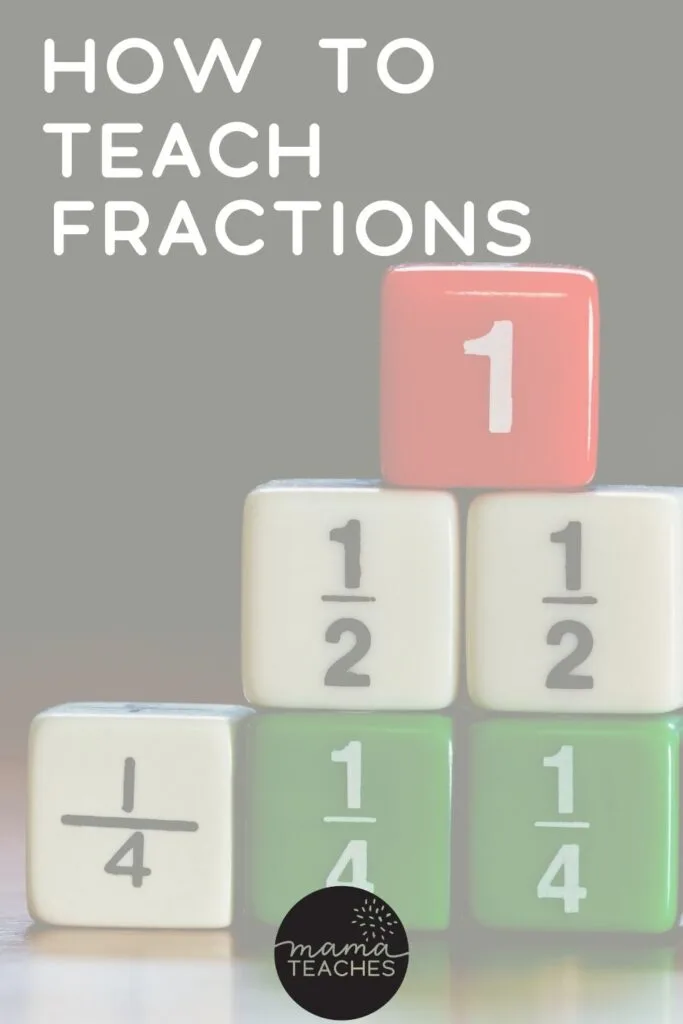
Step 3: The Fraction Bar
Say, “Because I sliced these pizzas into equal-sized pieces, I need to put a slicing symbol.
We call this the fraction bar.” Draw a fraction bar on top of the numbers 2, 3, and 4. “The number below the fraction bar is called the denominator.
We can remember its name because the denominator is d, d, down below the fraction bar.
The denominator tells you how many equal pieces you have in your whole pizza.” Write the words “fraction bar” and “denominator” on the board.
Step 4: The Numerator
“Now we get to the fun part: eating the pizza!” Hold up the pizza cut into halves.
Hand one slice to a student.
“How many pieces did you get?”
(1) Write 1 on top of the fraction bar.
“This number is called the numerator.
We remember its name because the numerator is n, n, north of the fraction bar.
The numerator tells you how many pieces you get out of the whole pizza.
You got one piece out of the two pieces.”
Write the words “one half” on top of the fraction.
“We call this fraction one half, or 1 out of 2 pieces.”
Repeat this process by giving out slices to make 1/3, 1/4, 2/3, 2/2, 3/4, etc.
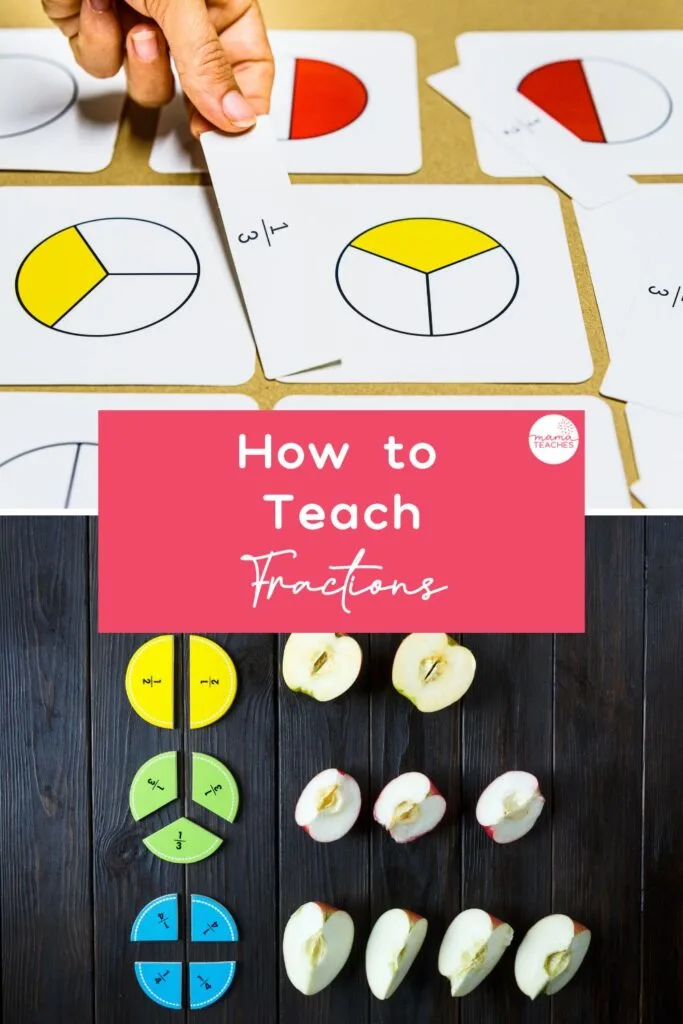
Step 5: Equivalent Fractions
Steps 1-4 are the most important steps in how to teach fractions.
You can also show how some fractions are equivalent.
1 whole = 2/2 = 3/3 = 4/4. Or 1/2 = 2/4=4/8.
This is a more advanced concept, but you may want to introduce it early on.
Strategies for Teaching Fractions
The best strategies for teaching fractions involve hands-on activities.
Manipulatives
You can purchase magnetic fraction tiles or stackable fraction bars, or you can create your own manipulatives out of paper.
Practice forming fractions with manipulatives and writing fractions on paper.
Measuring Cups
You can practice fractions using measuring cups and sand, water, rice, or dried beans.
You can also use a real recipe.
When teaching equivalent fractions, give the student 1/4 measure only.
Then give him a recipe for trail mix where he needs to figure out how many 1/4 cup he must add to make 1/2, 3/4, and 1 whole cup.
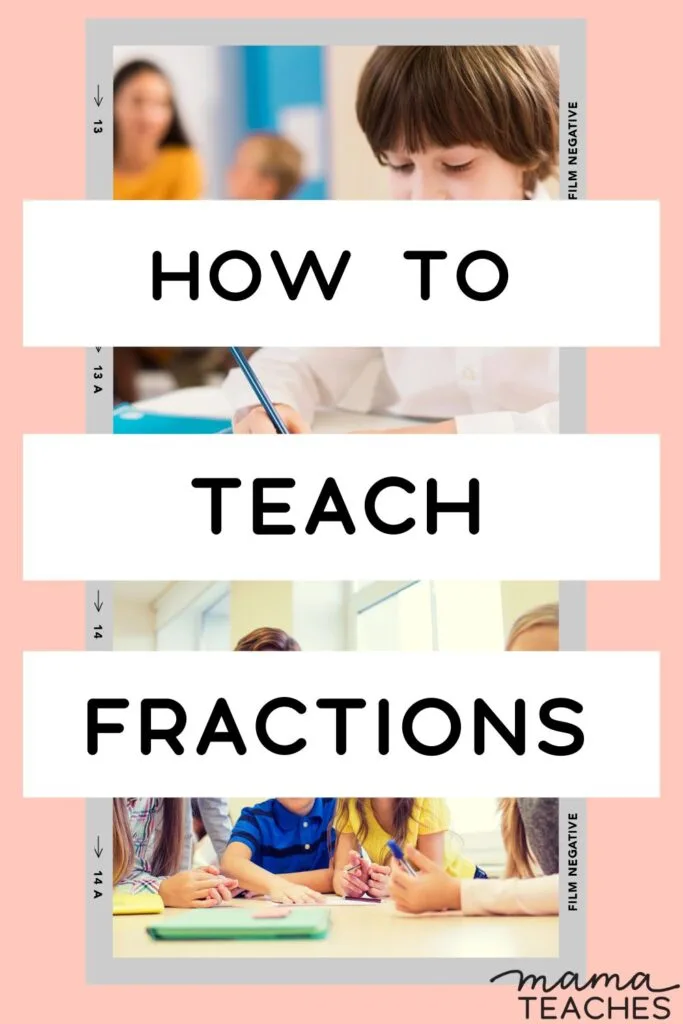
LEGO Bricks
Lego bricks are the perfect toys for math.
You can use Legos to teach and reinforce fractions with these fun, hands-on activities.
Food
Fractions are more fun when you can eat them!
Try these three hands-on fraction activities that use food.
Free printables are included!
How to Teach Fractions for the First Time
Fractions are everywhere in math, from simple measuring to advanced trogonometry.
Solidy the basics of how to teach fractions to students with these simple visuals and step by step instructions.
